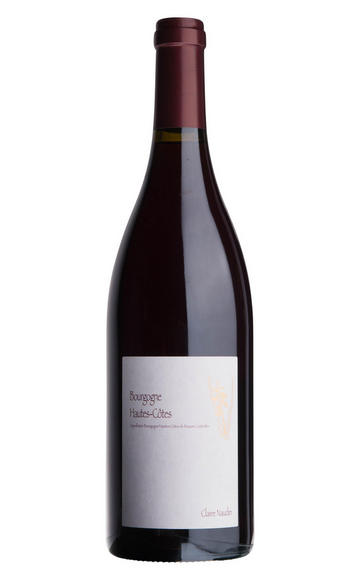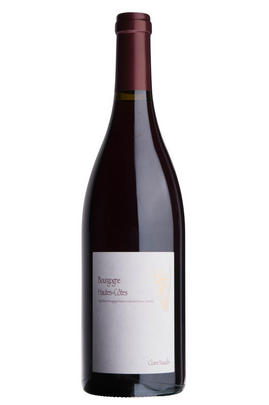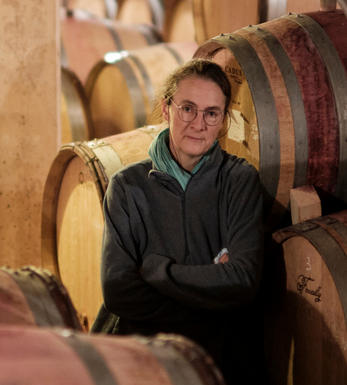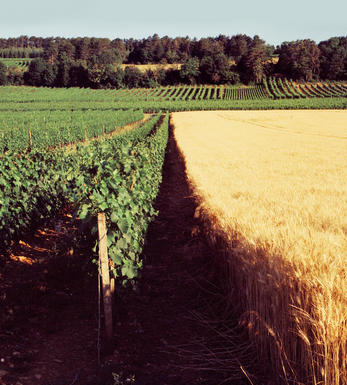
2015 Bourgogne Hautes-Côtes de Nuits, Myosotis Arvensis, Naudin Ferrand

About this WINE

Domaine Naudin-Ferrand
Claire Naudin, one of Henri Naudin-Ferrand’s three daughters, has been in charge of this small domaine based in the Hautes Côtes at Magny-les-Villers, a village that sits astride the dividing line between Hautes Côtes de Beaune and Hautes Côtes de Nuits, since 1994.
Claire is relatively susceptible to sulphur and uses the product as little as possible. Though some of the wines are made in an ‘orthodox fashion, the most exciting wines are those which are vinified with whole bunches (all the stems) and without sulphur, though some SO2 is added at bottling to ensure that the wines remain stable thereafter.
Claire’s theory, which her wines bear out admirably, is that there is none of the harshness sometimes evident when the bunches are vinified with their stems if sulphur is not used. Instead a magical floral perfume emanates from the wine.

Bourgogne Aligoté
Bourgogne Aligoté is a regional Appellation d’origine contrôlée (AOC) for white wines produced in Burgundy from the Aligoté variety of grape, which dates from 1937.
Aligoté grapes have played a prominent role in white Burgundy production since the 1600s, but are now being phased out in favour of the more popular and profitable Chardonnay grape: in 2007 only 1,700 hectares (4,200 acres) of Aligoté were grown compared to the 12,800 hectares (32,000 acres) of Chardonnay. The AOC regulations permit up to 15% Chardonnay to be blended with the Aligoté.
Bourgogne Aligoté is usually regarded as a somewhat more acidic wine, best enjoyed in its youth due to its lighter nature. It is also a primary component in the production of the popular French cocktail kir, by combining the Aligoté wine with the blackcurrant liqueur crème de cassis.
Aligoté has one appellation exclusive to its grape: Bouzeron, in the Côte Chalonnaise region of Burgundy, where 53 hectares are dedicated to this unique Aligoté based wine.

Pinot Noir
Pinot Noir is probably the most frustrating, and at times infuriating, wine grape in the world. However when it is successful, it can produce some of the most sublime wines known to man. This thin-skinned grape which grows in small, tight bunches performs well on well-drained, deepish limestone based subsoils as are found on Burgundy's Côte d'Or.
Pinot Noir is more susceptible than other varieties to over cropping - concentration and varietal character disappear rapidly if yields are excessive and yields as little as 25hl/ha are the norm for some climats of the Côte d`Or.
Because of the thinness of the skins, Pinot Noir wines are lighter in colour, body and tannins. However the best wines have grip, complexity and an intensity of fruit seldom found in wine from other grapes. Young Pinot Noir can smell almost sweet, redolent with freshly crushed raspberries, cherries and redcurrants. When mature, the best wines develop a sensuous, silky mouth feel with the fruit flavours deepening and gamey "sous-bois" nuances emerging.
The best examples are still found in Burgundy, although Pinot Noir`s key role in Champagne should not be forgotten. It is grown throughout the world with notable success in the Carneros and Russian River Valley districts of California, and the Martinborough and Central Otago regions of New Zealand.


Buying options
Add to wishlist
Description
Fine, rich, dense purple with an exotic perfume, this is very floral yet also has vibrant raspberry notes. A very graceful, sensual wine – if anything it is longer and finer than Orchis. Drink 2018-2022.
Jasper Morris MW, WIne Buyer
Since 1994, Claire Naudin, one of Henri Naudin-Ferrand’s three daughters, has been in charge of this small domaine based in the Hautes Côtes at Magny-lès-Villers, a village that sits astride the dividing line between Hautes Côtes de Beaune and Hautes Côtes de Nuits. Claire is relatively susceptible to sulphur and uses the product as little as possible. Her most exciting wines are those which are vinified with whole bunches (all the stems) and without sulphur, though some SO2 is added at bottling to ensure that the wines remain stable thereafter. Claire’s theory, which her wines bear out admirably, is that there is none of the harshness sometimes evident when the bunches are vinified with their stems if sulphur is not used. Instead a magical floral perfume emanates from the wine.
Claire Naudin has made beautiful wines in 2015, though not in great quantity, as the year’s dry conditions restricted volumes. The wines from the Hautes Côtes are little more than 12 degrees alcohol but have impressive density. All the wines were vinified without sulphur, but have had sulphur added before bottling to ensure stability thereafter.
wine at a glance
Delivery and quality guarantee